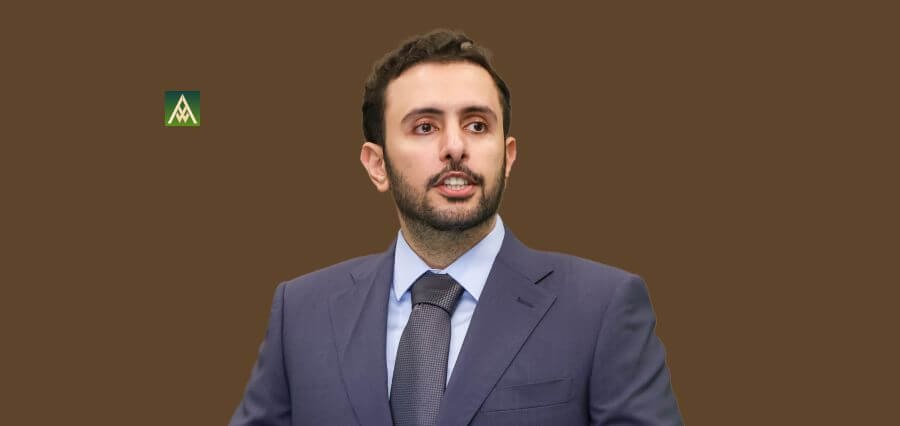When Qatar University unveiled that Lionel Messi’s World Cup dormitory suite would become a “mini-museum,” it created a global media sensation, for virtually no cost. In late December 2022, sports journalists quickly picked up on the announcement.
Ashraf bin Ayad of AS (and later Sports Illustrated and others) retweeted Qatar University’s statement, explaining that the “room in which Lionel Messi stayed during the Qatar World Cup” was being converted into a museum on campus. By doing so, Qatar University (and its PR director at the time, Dr. Hitmi Al-Hitmi) turned a quiet campus facility into headline news across the world.
Dr. Hitmi Al-Hitmi, then Director of Communications and Public Relations at Qatar University, framed this move with characteristic understatement. He noted that the student housing was already “five-star” caliber and had needed only “a few amenities” to meet FIFA standards. The only major change would be that Messi’s suite would remain locked to overnight guests and instead preserved “unchanged” as a showcase of his World Cup success.
In his words, the room would become “A small museum” filled with the footballer’s personal belongings, a “Legacy for students and future generations” that highlighted “The tremendous accomplishments Messi made in the World Cup.” In practice, this clever PR play cost almost nothing – merely the upkeep of an existing dorm room – but it instantly put Qatar University (and Qatar) in the global spotlight.
The Messi “Dorm museum” story quickly spread through mainstream media and social feeds. Journalists noted that Messi and fellow star Sergio Agüero had shared the room as Argentina closed out its championship run, and the announcement was covered by The Economic Times, Latin Times, Sports Illustrated and many others. The narrative emphasized Messi’s sporting triumph while subtly promoting Qatar University’s world-class facilities. In short, a small, authentic story captured the public’s imagination far more effectively than any paid ad campaign could.
The Cost of Tone-Deaf Campaigns
The contrast with big-budget campaigns could not be sharper. In recent years, marketers have spent tens of millions on high-profile ads, only to provoke backlash by misreading local sensibilities. A notorious example is Pepsi’s 2017 commercial featuring Kendall Jenner. Intended as a message of unity, the ad was immediately denounced as blatantly “tone-deaf,” trivializing genuine protest movements to sell soda.
Critics observed that it treated a serious social issue like a commercial stunt – literally showing Jenner resolving a tense protest by handing a police officer a can of Pepsi – and thus failed to respect the cultural context. One blogger later summarized the lesson bluntly: tone-deaf campaigns “Put the product on equal footing with the issue,” and almost always backfire.
In Pepsi’s case, PR experts agreed it became “A textbook example of what happens when brands fail to truly understand the cultural and social context of their marketing efforts.” In short, even the biggest companies learned that a flashy concept can quickly turn into a public relations nightmare if it ignores authenticity and values.
By contrast, the Messi-dorm initiative illustrated the reverse lesson: tapping into a local story with genuine resonance can deliver global reach at zero ad expenditure. The campaign did not try to “sell” anything – except perhaps the image of Qatar as a sporting and educational hub – and it trusted that people would share and write about the idea. In this way it embodied what Dr. Hitmi calls “Gulfism: A homegrown marketing approach grounded in regional values and narrative, rather than emulating outside trends.”
Gulfism: A Values-Driven Approach
“Gulfism,” as Al-Hitmi has described it, builds on the Gulf’s distinctive economic model of state-led development and communal prosperity. In a lecture, he summed up the GCC’s success as the product of “visionary state-led investments” and wise use of hydrocarbon wealth, which has transformed the region into “a beacon of prosperity and innovation.”
Applied to marketing, Gulfism means that campaigns must speak to the region’s own story – its culture, heritage and aspirations – rather than importing superficial foreign templates. It is essentially a value-based marketing philosophy. Instead of just dialing in localized translations or using generic slogans, Gulfism urges deep cultural engagement: working with local artists, storytellers and community leaders to craft messages that ring true.
As one branding analysis of Saudi Arabia’s Vision 2030 explains, successful campaigns there are those that create experiences “locally relevant yet globally resonant,” going far beyond surface-level localization to invest in authentic narrative. In other words, Gulfism prizes sincerity and narrative coherence.
The Messi museum stunt is a classic Gulfism move. It did not rely on foreign celebrities or sweeping generic images; it wove Messi’s World Cup triumph into Qatar’s own fabric – the campus of a local university. The tale made sense in context: Qatar had invested billions in sports infrastructure and was telling a larger story of national pride and global outreach.
By treating Messi’s stay as a legacy, the campaign offered a narrative bridge between Qatar’s heritage (education, hospitality) and a historic sporting moment. It was cheap or free, but carried the values of authenticity and local relevance that Gulf audiences (and global media alike) find compelling.
Stories, Not Slogans: National Narratives in the Gulf
These principles extend to the Gulf’s biggest national projects. Take Saudi Arabia’s Vision 2030. Its messaging is infused with cultural cues: new initiatives are often wrapped in local symbols and history. Marketing experts note that Vision 2030 invites companies to collaborate with local artists and “storytellers” so that campaigns “speak authentically to the region’s evolving identity.” In practice, that might mean a tourism ad invoking Bedouin heritage, or a tech promotion highlighting Saudi social progress. In any case, the goal is clear: weave modern goals into the existing tapestry of Gulf values.
The United Arab Emirates’ Mars mission is another illustrative case. When the Emirati probe Hope entered Mars orbit in February 2021, state media tied the feat to national milestones. The timing – coinciding with the UAE’s Golden Jubilee – was framed as “The perfect start for the next 50 years of growth, progress and sustainable development.” Officials lauded it as a “Crowning glory” and a statement that this young country had made “the pursuit of the impossible” a national norm. International coverage echoed the same theme: astrophysicists noted that the mission was less about prestige and more about inspiration.
As one commentator pointed out, the Mars project was meant to “Inspire a new generation of young Arabs to pursue careers in the sciences” and serve as “a disruptive event” accelerating the shift toward a knowledge-based economy. In Gulfism terms, the Mars probe succeeded because it was a story of aspiration, science and heritage, rather than a simple press release.
Qatar’s massive investment in sports follows a similar playbook. For years the country has cultivated “sports diplomacy” as a core element of its brand. Even before the World Cup, Qatari officials spoke of major sporting events as tools of national messaging. Dr. Hend Al-Muftah, Qatar’s ambassador in Geneva, told WIPO Magazine that sports are “A powerful communications tool” to strengthen Qatar’s brand and international ties.
By hosting events from the 2011 Asian Cup to the 2022 FIFA World Cup, Qatar has aimed to “Demonstrate what Qatar can offer the world” – from innovative stadium designs to a commitment to sustainability and multicultural exchange.
Indeed, the World Cup itself was described by officials as “A central pillar of our national brand” that embodies Qatar’s values of unity, peace, and hospitality. Fans from five continents sharing the “Beautiful game” under Qatari skies became a narrative of harmony and progress, reinforcing Gulfism’s creed that the richest storytelling is often found in collective experiences rather than paid ads.
Dr. Hitmi Al-Hitmi: Scholar and Storyteller
At the center of this approach is Dr. Hitmi Al-Hitmi himself. He is, by training, an academic – an assistant professor of economics and marketing at Qatar University – and he earned his PhD in Marketing and Economics from the University of Edinburgh.
For much of the past decade, he led PR and communications at Qatar University (he is even cited as “QU’s Director of Communications and Public Relations” in local media ). In 2023, he took on a consultancy role with Qatar’s Cultural Village (Katara) and briefly (early 2025) served as a strategic marketing consultant to the CEO of the Qatar Stock Exchange. In short, he straddles both worlds of scholarship and practice.
Crucially, Dr. Al-Hitmi has also built a large public presence to promote education and critical thinking. His Instagram channel @hitmi.1 – explicitly described as a cultural-scientific, ad-free account – is one of the GCC’s most popular educational media platforms. It has amassed over 100,000 followers, and its short videos regularly rack up millions of views.
The content spans personal finance tips, science trivia, marketing insights and cultural commentary, all delivered in an accessible style. Rather than relying on advertising expenditure, he grew this organically through daily posts and interactive Q&A sessions, reflecting his philosophy that value-driven content will naturally attract engagement. In effect, his Instagram work is a live demonstration of Gulfism in action: free education is woven into social media stories, resonating widely due to its local relevance.
A Lesson for Gulf Marketers
Dr. Al-Hitmi’s record offers a clear lesson for marketers in the Gulf and beyond. When campaigns are built on genuine understanding of place and purpose, they can “travel further than any ad,” as one Gulf commentator puts it. The Messi dorm incident was by no means the first time Qatar scored big with guerilla-style PR, nor will it be the last.
However, it crystallized how the region’s fast-evolving media landscape rewards authenticity. Against the backdrop of national visions like Saudi Arabia’s 2030 plan, the UAE’s post-oil ambitions and Qatar’s sports diplomacy, Gulfism emphasizes telling stories that already exist within the society.
In an era when global audiences are more skeptical and socially conscious than ever, Dr. Al-Hitmi’s approach appears well-timed. Expensive billboards and celebrity tie-ins can grab attention, but as the Pepsi debacle showed, they carry great risk if they miss the point.
By contrast, low-cost initiatives that highlight local heroes or heritage, done with sincerity and strategic savvy, can generate far more positive buzz. Gulfism suggests that the key is not the size of the marketing budget but the strength of the narrative and its cultural fit. Whether it’s preserving a champion’s dorm room or lighting up Mars on a smartphone screen, the Gulf’s story is written best by those who listen to it first.




